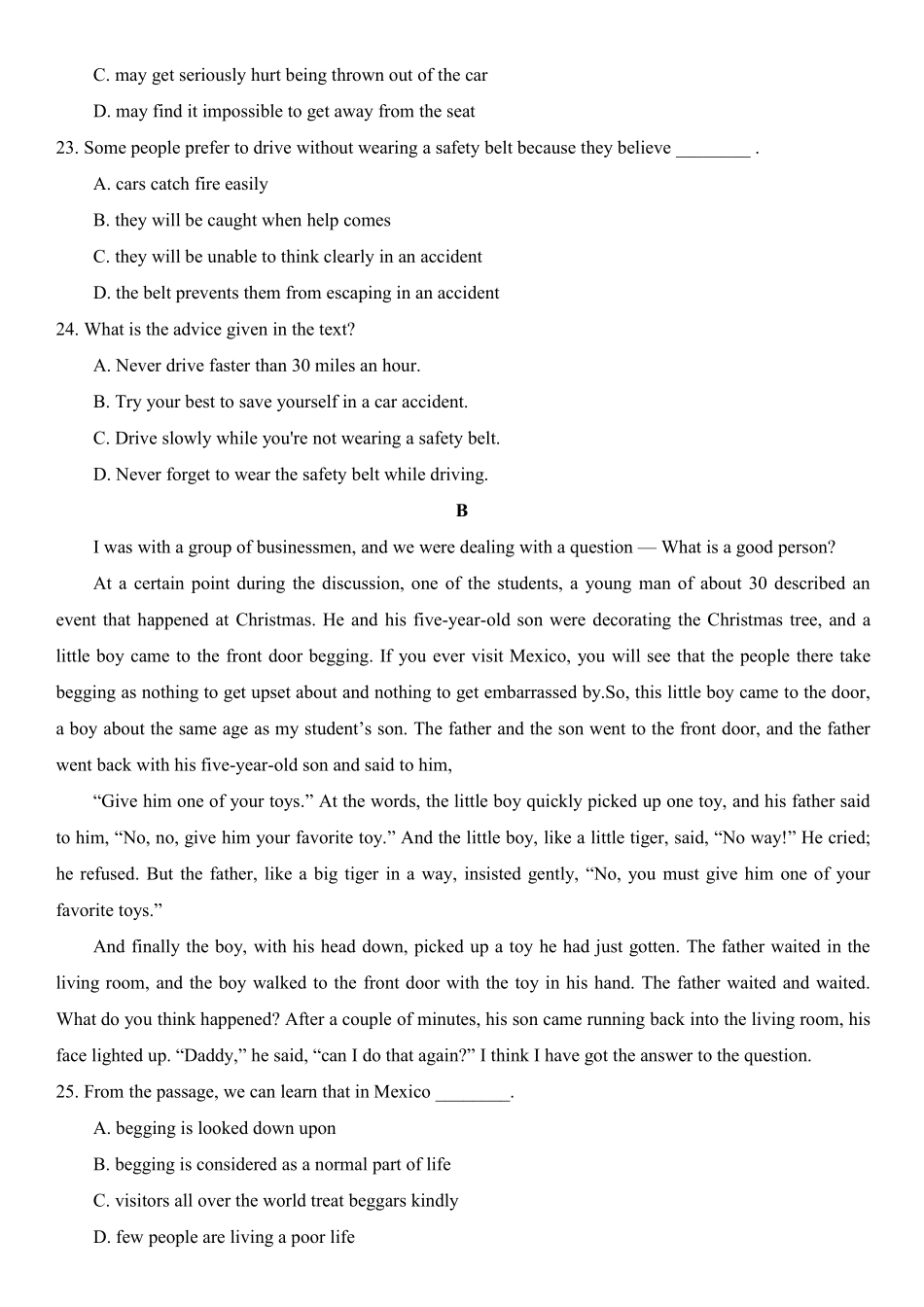集美高中高二英语月考试题第I 卷第一部分听力(略)第二部分阅读理解(共两节,满分40 分)第一节(共15 小题; 每小题2 分,满分30 分)阅读下列短文,从每题所给的四个选项(A、B、C 和D)中,选出最佳选项,并在答题卡上将该项涂黑。AMaybe ten-year-old Elizabeth put it best when she said to her father. “But, Dad, you can’t be healthy ifyou’re dead.” Dad, in a hurry to get home before dark so he could go for a run, had forgotten to wear hissafety belt — a mistake 75% of the US people make every day. The big question is why. There have beenmany myths(虚构故事)about safety belts ever since their first appearance in cars some forty years ago. Thefollowing are three of the most common myths.Myth Number One: It’s best to be “thrown clear” of a serious accident.Truth: Sorry, but any accident serious enough to “throw you clear” is also going to be serious enough togive you a very bad landing. And chances are that you’ll have traveled through a windshield (挡风玻璃) ordoor to do it. Studies show that chances of dying after a car accident are twenty-five times greater if peopleare “thrown clear.”Myth Number Two: Safety belts “trap” people in cars that are burning or sinking in water.Truth: Sorry again, but studies show that people knocked unconscious (昏迷) due to not wearing safetybelts have a greater chance of dying in these accidents. People wearing safety belts are usually protected tothe point of having a clear head to free themselves from such dangerous situation, not to be trapped in them.Myth Number Three: Safety belts aren’t needed at speeds of less than 30 miles per hour.Truth: when two cars traveling at 30 mph hit each other, an unbelted driver would meet the windshieldwith a force equal to diving headfi...


